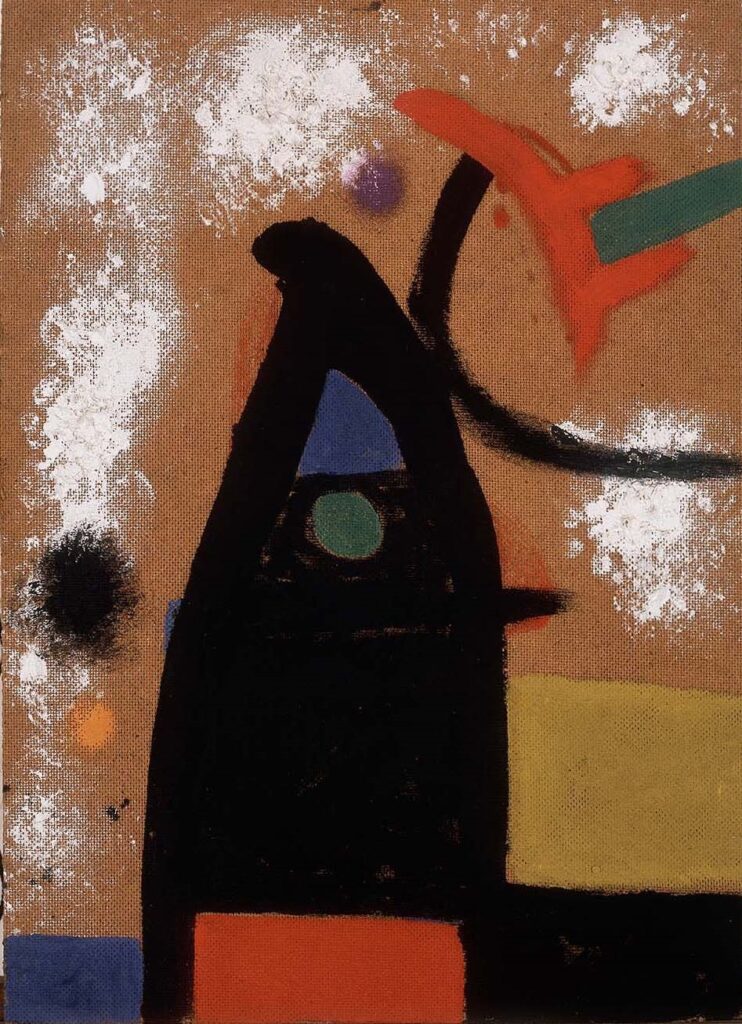
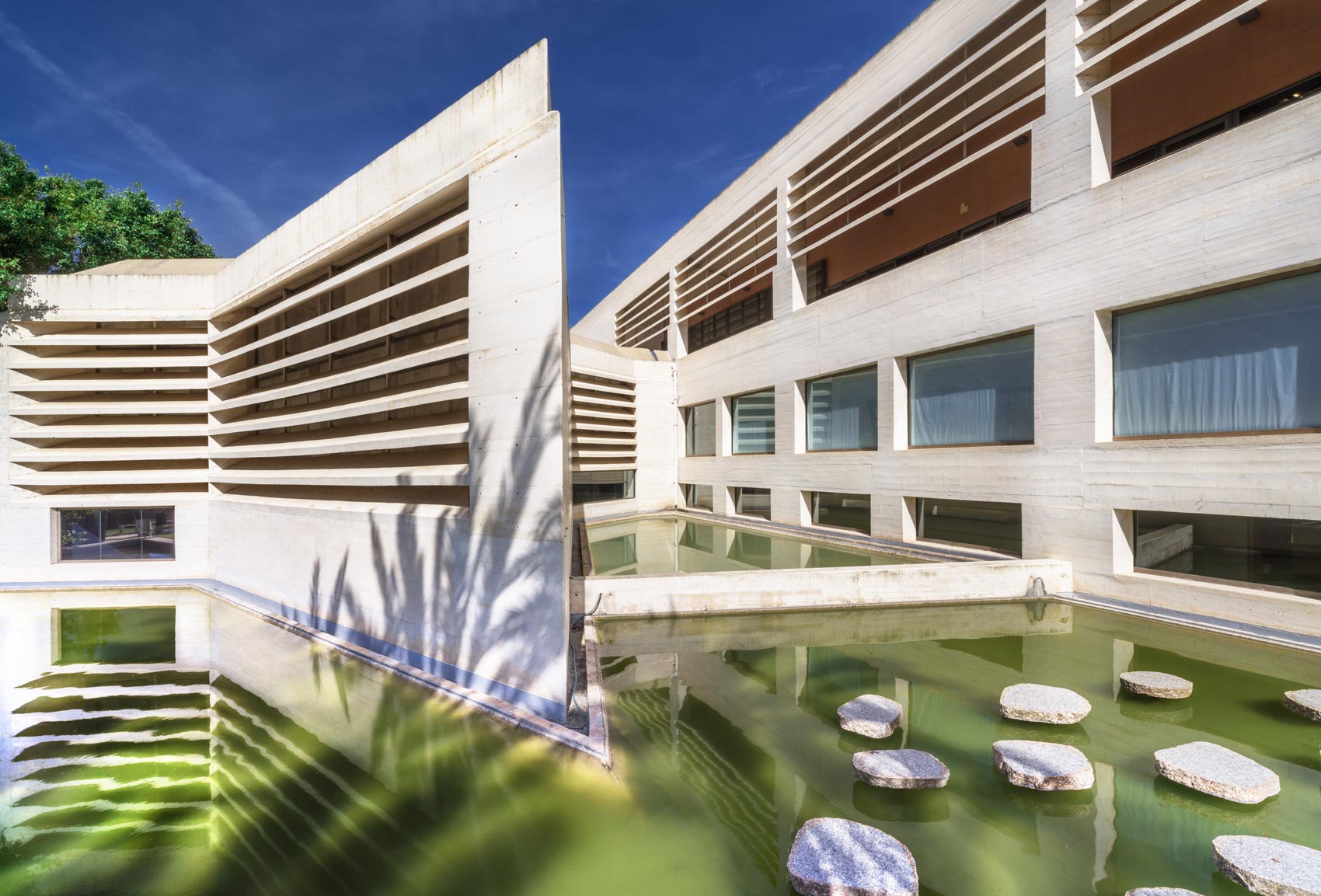
Moneo building
Espai Cúbic
L'edifici Moneo, seu actual de la Miró Mallorca Fundació, es va inaugurar el 1992. Projectat per l'arquitecte Rafael Moneo és el resultat de la donació de Pilar Juncosa, vídua de Miró, a la Ciutat de Palma.
-
Exhibition space
- Espai Cúbic
-
Dates
- 24 March — 13 October 2022
-
Inauguration
- 23 March 2022
- 19:00
“Miró Beyond the Canvas”
The physical supports used by Joan Miró over the years range from conventional canvases, which he even came to tear or make holes in, to different quality papers, wood, cardboard and even more unorthodox materials like sandpaper, corkboard, burlap, tarpaulin, animal skins, fibre cement, Masonite, Celotex and metals such as copper or aluminium.

Miró’s well-known desire to go beyond painting and to let a deep poetics take precedence over virtuoso technique was united with an urge to experiment with all kinds of media and techniques. The material aspect of his work–the chosen physical support and instrument–played a decisive role in the initial spark that was triggered and also in the final outcome and its impact on spectators. Miró himself described how that first gesture would induce a certain frame of mind that was absolutely crucial to get to grips with the work.
The physical supports used by Joan Miró over the years range from conventional canvases, which he even came to tear or make holes in, to different quality papers, wood, cardboard and even more unorthodox materials like sandpaper, corkboard, burlap, tarpaulin, animal skins, fibre cement, Masonite, Celotex and metals such as copper or aluminium. This wide variety of supports served as a basis for him to experiment with techniques of all kinds: painting, drawing, collages, sculptures or tapestry in his ceaseless quest for new artistic challenges and unexplored avenues.
This exhibition comprises a selection of paintings on unusual supports: discarded or re-used materials or ones found in his studios, which he took as a starting point for his work, giving them a second life. Miró did not set out with any preconceived idea in mind. Instead, he let himself be guided by matter, by chance encounters and by the spark they triggered. The creative process was gradually adapted to the dictates and needs of the materials, giving free rein to his wildest forms of expression.
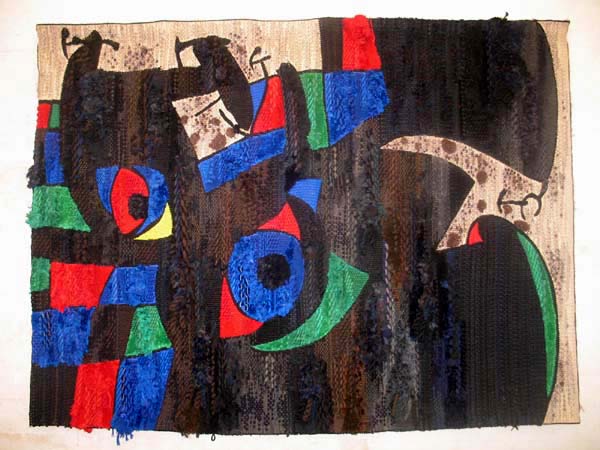
In Espai Cúbic, some examples of his work with tapestry can be seen, made in collaboration with Josep Royo, where Miró’s language–in this case, from the lithographs Le Lézard aux plumes d’or–is transposed to a textile support. It was with the sobreteixims, some of whose preliminary drawings and photos can be seen, that Miró challenged the boundaries of his practice, exploring, manipulating and even destroying the support. Through this freedom, he managed to recapture the essence: a profound hidden dimension beyond the limits of the canvas.
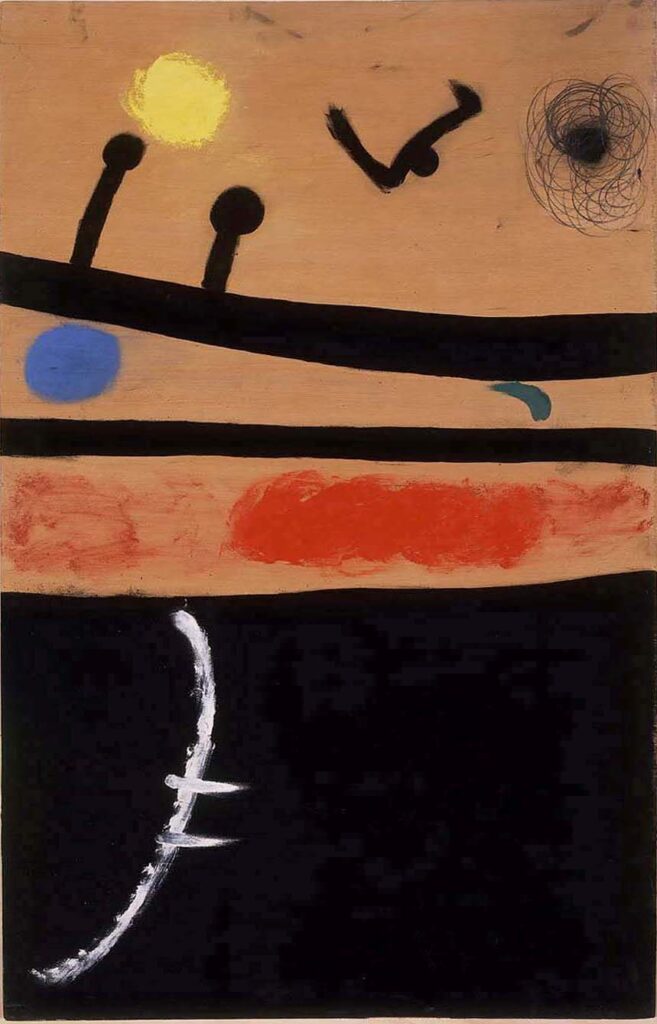
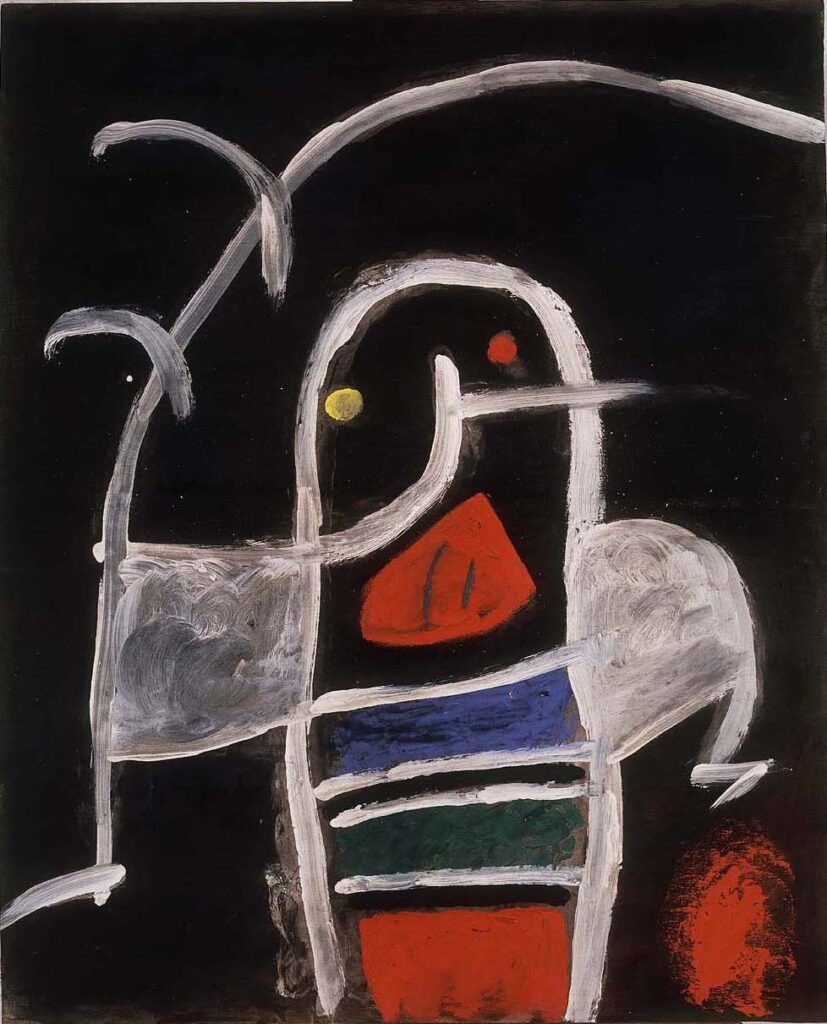
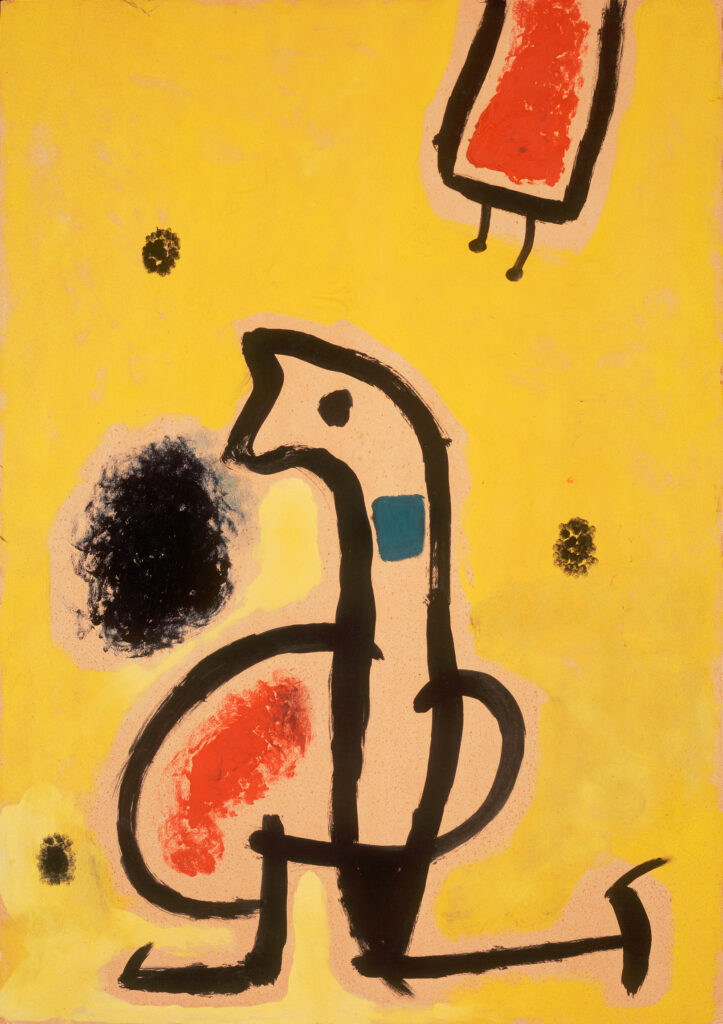


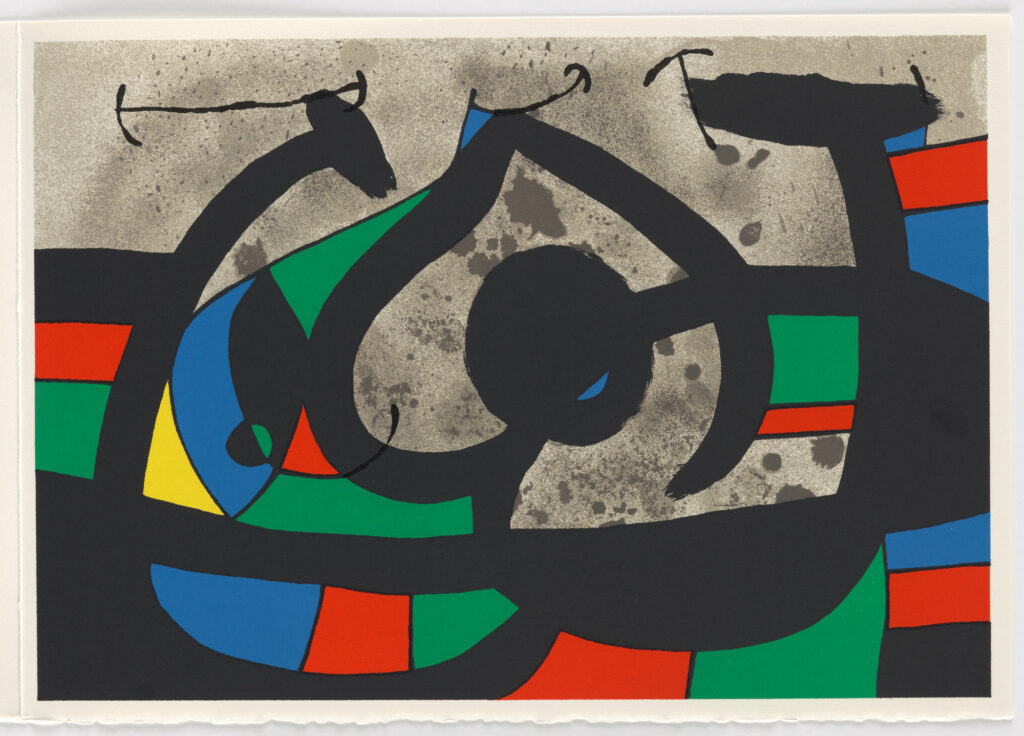
Le lézard aux plumes d’or (the wall lizard of the golden feathers) is a poetic text with a strongly surrealistic tone. It is included in a notebook that Miró prepared between 1936 and 1939 because he probably was already thinking in the possibility of making a book with that. It was published in 1945 in the magazine Cahiers d’Art with the title of “Jeux poétiques”.
Le lézard aux plumes d’or is a book that is completely made from the use of the lithography. They were used for the production of the fifteen lithographs of the book and for the impression of the text pages where the manuscript scripture of Miró is reproduced. This solution that identifies the author of the text only with the opening of the book, keeps a perfect equilibrium between the power of the graphics of Miró and the visual impact of the images that are contained into the book.
In this exhibition of five tapestries we can observe all this qualities. All this pieces are inspired in the poem’s book Le lézard aux plumes d’or, illustrated and written by Joan Miró in 1971, from whom we show five lithographs.



